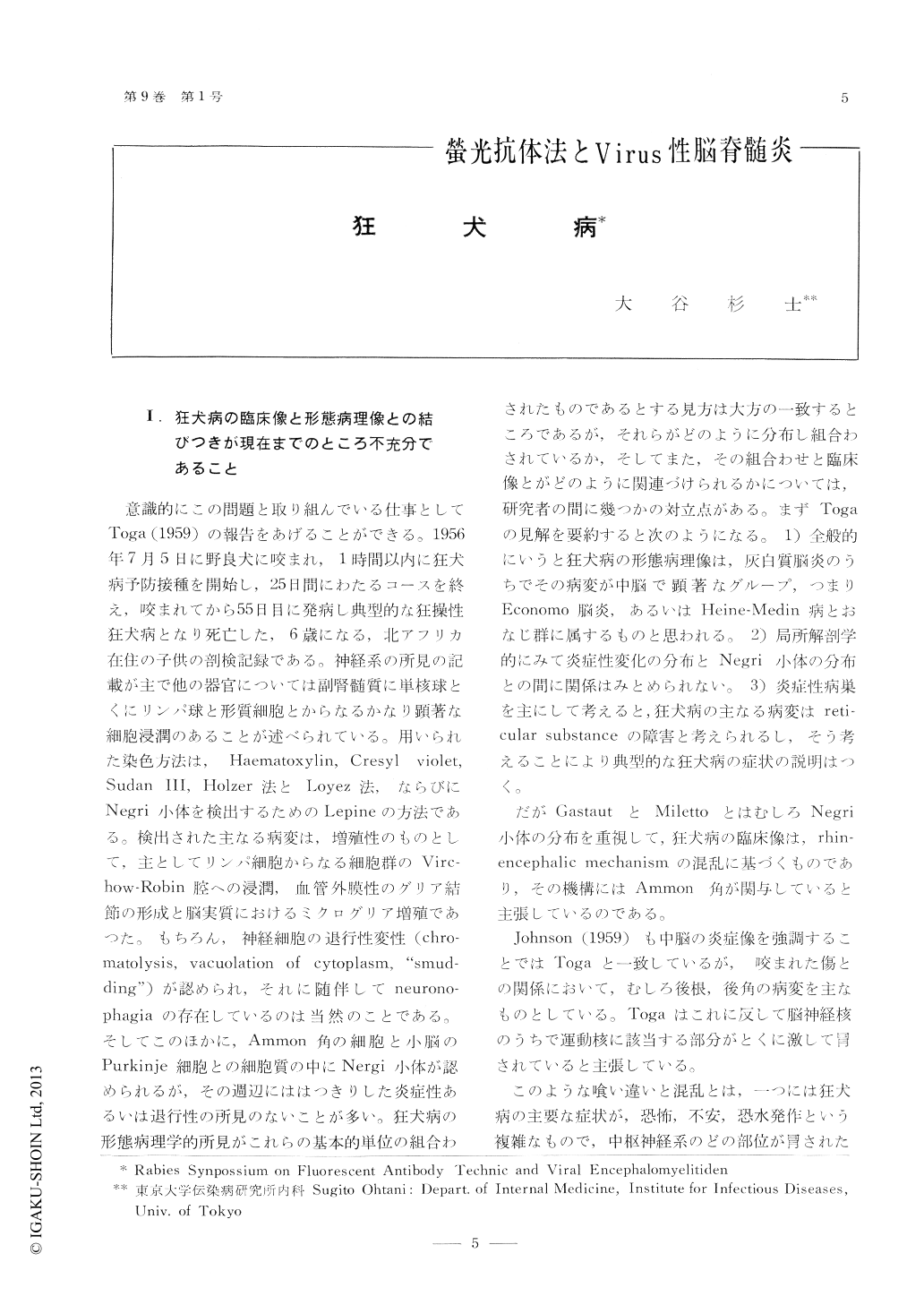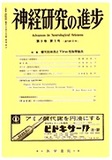Japanese
English
- 有料閲覧
- Abstract 文献概要
- 1ページ目 Look Inside
I.狂犬病の臨床像と形態病理像との結びつきが現在までのところ不充分であること
意識的にこの問題と取り組んでいる仕事としてToga(1959)の報告をあげることができる.1956年7月5日に野良犬に咬まれ,1時間以内に狂犬病予防接種を開始し,25日間にわたるコースを終え,咬まれてから55日目に発病し典型的な狂操性狂犬病となり死亡した,6歳になる.北アフリカ在住の子供の剖検記録である。神経系の所見の記載が主で他の器官については副腎髄質に単核球とくにリンパ球と形質細胞とからなるかなり顕著な細胞浸潤のあることが述べられている。用いられた染色方法は,Haematoxyhin,Cresyl violet,Sudan III,Holzer法とLoyez法,ならびにNegri小体を検出するためのLepineの方法である。検出された主なる病変は,増殖性のものとして,主としてリンパ細胞からなる細胞群のVirchow-Robin腔への浸潤,血管外膜性のグリア結節の形成と脳実質におけるミクログリア増殖であつた。もちろん,神経細胞の退行性変性(chromatolysis,vacuolation of cytoplasnn,"smud-ding")が認められ,それに随伴してncuronophagiaの存在しているの)は当然のことである。
The present attempts using the fluorescent antibody technique are focused to investigate thesimplified features of virus propagation in rabiesstreet virus encephalomyelitis and to clarifythe varieties of replication of rabies virus inthe various cells of suckling mice. The strainof street rabies virus originally isolated from aclog with natural infection in Tokyo area 1952were used. The rabies virus maintained theability of producing Negri bodies in the hippo-campus of young mice. Seven sucklings of 2or 3 days old of the DD mouse strain wereinoculated intramuscularly (M. Masseter dextra) with about 103 LD50 of the virus. Themice manifested typical signs of furious rabies8 days after inoculation and subsequentlygeneral paralysis for 2 Or 3 days before death. These animals were stunned and decapitatedat immediately frozen at -70℃ The gamma-globulin fractionated by means of the Kendall'method from the anti-rabies hyperimmunerabbit sera was conjugated with fluoresceinisothiocyanate by the method of Marshall at al. and store d in frozen. The conjugates wereabsorbed before use with acetone-dried powdered mixture of mouse brain and liver preparedaccording to the method of Coons et al. Freshfrozen sections of about 8 microns in thicknesswere prepared in a cryostat and fixed in acetoneat C for 1 minute. Each preparation was covered with the conjugate 1 : 20 in saline solutionfor 24 hours at 4℃. After washing in salinesolution, the preparations were mounted inElvanol and examined under the fluoresce ntmicroscope.
The hosts in the rabies infection are salivarygland cell and nerve cell, in later cell the virusantigen is distributed in the process as wellthe cytoplasm. In the ganglia of both cranialand spinal nerve, brain stem and diencephalon, rabies virus antigen appears at an earlier stageof infection and incubation period of infection isshorter at the side of inoculation. Fine particlesof rabies virus antigen in acinar cells of the salivary gland firstly appears at the stage of 3 claysinfection, gradullya aggregate in the cellularperiphery of allsarrounding the auinal spaces.

Copyright © 1965, Igaku-Shoin Ltd. All rights reserved.


